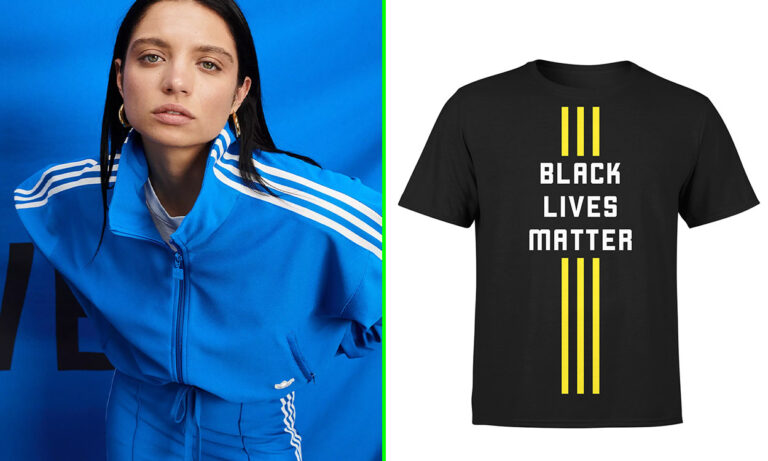Adidas backtracks over shameful move to bar Black Lives Matter from using three stripes trademark

On Monday 27 March 2023, German sportswear giant Adidas asked the US Patent and Trademark Office to reject an application for a Black Lives Matter (BLM) trademark featuring three parallel stripes. The company, known for its own unmistakable triple stripe, argued that it would mislead the public if the political and social movement used a yellow-stripe design.
In its filing, the brand sought to block BLM’s application to use the design on similar goods to the ones Adidas sells, such as bags, t-shirts, hats, and more. As you can imagine, netizens were quick to condemn the move, with many pointing out how easy it would be for people to mistake Adidas’ trademark objection as criticism of the Black Lives Matter movement and mission.
This, in turn, led to the sportswear label’s embarrassingly quick backtrack. On Wednesday 29 March, the company released a statement announcing its change of mind: “Adidas will withdraw its opposition to the Black Lives Matter Global Network Foundation’s trademark application as soon as possible.”
Right after the news hit the unforgiving Twittersphere, users immediately assumed battle stations, jokingly coming up with other potential trademark disputes Adidas might go after:
This is funny as hell, and BLM deserves a corporate enemy,….but Adidas has a lot of lawsuits to go through. pic.twitter.com/DyxcHUJIPH
— US Burning (@UsBurning) March 28, 2023
Though it should be noted that the company is no stranger to filing lawsuits over its three-stripe trademark—it’s filed over 90 lawsuits and signed more than 200 settlement agreements related to the design since 2008—this controversy couldn’t come at a worse time for Adidas.
Following the end of its incredibly lucrative collaboration with Kanye West on Yeezy over anti-Semitic comments made repeatedly by the rapper, it was reported less than a week ago that the firm would also end its high-profile partnership with Beyoncé and the singer’s athleisure brand IVY PARK.
As if all of this wasn’t enough, in January, Adidas lost a lawsuit it had filed back in 2021 against New York designer Thom Browne’s luxury brand, claiming that the eponymous label’s four-bar and “Grosgrain” stripe patterns on its shoes and high-end activewear violated its three-stripe trademark rights.
According to a court filing, the German company had planned to ask the jury for over $7.8 million in damages, plus additional punitive damages and a cut of Thom Browne’s infringing sales. It also requested a court order stopping Thom Browne from using the designs.
adidas suing thom browne for the usage of stripes when all i can think about is how traditionally in korean funerals, men related to the deceased will wear armbands that vary in meaning depending on the number of stripes. the visual similarity makes me think about a lot pic.twitter.com/yzfTcBIzNU
— yoona (@TabiOrNotTabi) January 8, 2023
Ultimately, the jury found that the fashion house’s parallel stripe designs were not likely to cause consumer confusion with Adidas’ products. Among other things, Thom Browne had also argued that its designs have a completely different number of stripes. Seriously, Adidas?





